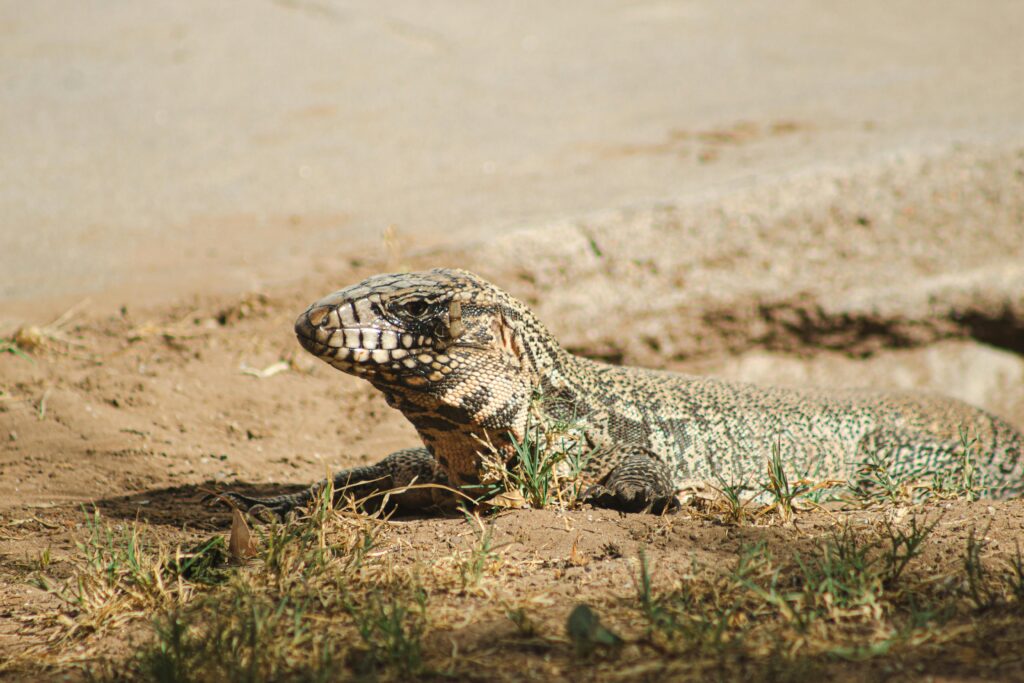Tegu Care Guide
Published: February 6th, 2024

Housing:
Enclosure Requirements:
Argentine tegus are large lizards, and their enclosure must reflect their size and activity level. A recommended enclosure size is 8’ x 4’ x 4’ frontopening reptile enclosure. This provides ample space for them to move, explore, and exercise their natural behaviors.
Heating and Lighting:
- Four ceramic socket lamp mounts with 175w PAR38 halogen flood bulbs are essential for creating a proper thermal gradient.
- Incorporate four plugin lamp dimmers to control the heat output.
- Provide 46 sq ft of flagstone or slate tile for a basking area.
- Install two 46” T5 HO desert UVB bulbs (Arcadia or Zoo Med brand) in fixtures with reflectors.
- Supplement with a 3648” 60007000K LED or fluorescent plant light to ensure proper lighting.
Temperature Monitoring:
Utilize a digital thermometer/hygrometer device with probes (2 units) and an infrared thermometer (“temperature gun”) for accurate temperature monitoring.
Environmental Enrichment:
Enhance the enclosure with environmental enrichment items such as caves, logs, thick branches, and plants. These additions create a more stimulating and engaging environment for the tegu.
Substrate:
Use 6” or more of naturalistic substrate to allow for digging and burrowing. This substrate should mimic the tegu’s natural habitat.
Download the Caresheet |
Diet and Feeding:
Feeding Tools
- Softtipped feeding tweezers (12”)
- Adequately sized food and water dishes
Supplements
- Provide a calcium powder supplement with low or no D3.
- Include a multivitamin powder supplement to ensure nutritional balance.
Other Equipment:
Temperature Control:
- Surge protector with a digital timer for controlling lighting and heating elements.
Hydration:
- Use a 12 gallon capacity pressure sprayer for maintaining humidity and providing drinking water.
Hideout and Shelter:
- Offer a reptile hideout/cave sized according to your tegu for security and comfort.
General Care:
Argentine tegus require diligent care due to their size and activity level. Regular monitoring of temperature, humidity, and a wellbalanced diet is essential. Adequate space and environmental enrichment are crucial for their wellbeing.
Note: Ensure that all equipment is properly secured, and the enclosure is escapeproof, as tegus are strong and may attempt to explore beyond their enclosure.
Download the caresheet for Tegu |

Recent Posts
- All Post
- care sheets
- guide
- Lizards
- snakes
- Uncategorized
- Back
- Mourning Gecko
- Sandfish skink
- Tegu
- Ackie Monitor lifespan
- Bearded dragon
- Blue Tongue Skink
- Crested Gecko
- Gargoyle Gecko
- Jackson's Chameleon
- Leopard Gecko
- Back
- Ball Python
- Black Rat Snake
- Corn Snake
- Gila Monster
- kenyan sand boa
- Milk Snake
- Back
- lizardscs
- snakescs



Address
215 Woodland Ave. Manchester, NH 03102




